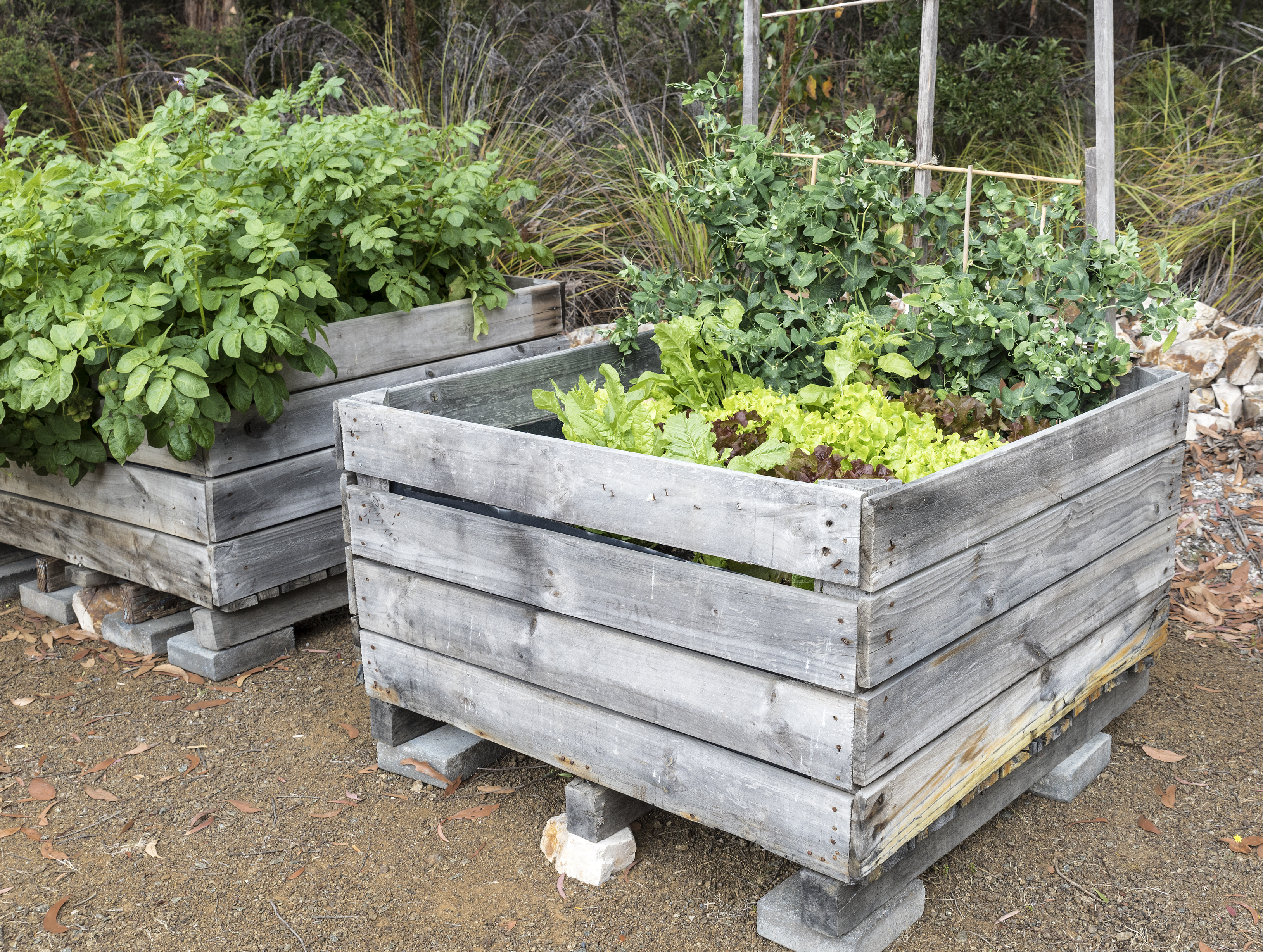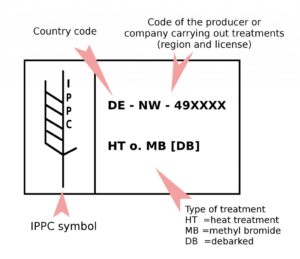There has been a lot of buzz about using pallet wood for home and garden projects lately. Pallet projects recycle perfectly useful wood to make all kinds of interesting things using free or inexpensive materials. But concerns about their safety have been raised by environmental and health advocates, and for good reason. Pallets can contain potentially harmful substances. Here are the risks and the steps that you can take to avoid them.
Instructions:
The International Plant Protection Convention requires new pallets to display an IPPC logo, which certifies that the pallet was either heat-treated or fumigated with Methyl Bromide. This is good information for consumers because Methyl Bromide is a chemical pesticide that is linked to human health risks and ozone depletion. Older pallets may not display the IPPC logo, making it difficult to ascertain whether or not they contain pesticide chemicals.
Here is how to read and decipher the IPPC symbol. The logo includes a 2 letter country code (such as US for the United States), a unique number manufacturer number assigned by the National Plant Protection Organization (NPPO), HT for Heat Treatment or MB for Methyl Bromide, and DB to signify debarked.
Pallets that are heat treated and debarked are most likely safe for use. Avoid using pallets treated with methyl bromide or pallets that do not display and IPPC logo for food gardening or furniture projects.
2. Consider how the pallet was used.
What has been on the pallet? Perhaps there were foods or chemicals shipped on them that could become trapped in the pores of the wood. If this sounds far-fetched, consider that in 2010, following a recall of E. coli tainted lettuce, the National Consumers League performed tests on pallets to discover if they could potentially carry the harmful bacteria. Not only did 10 percent of the pallets test positive for the presence of E. coli, but an additional 2.9 percent carried dangerous Listeria pathogens.
Pallets can also be exposed to unsanitary conditions on loading docks, barges or trucks and in warehouses, or they may have been used to ship chemicals and other toxic materials. If you are unable to discover the source and original use for the pallet, avoid using the wood for food gardening or furniture projects.
3. Clean the pallet.
Even if you have verified that the pallet was not fumigated with Methyl Bromide and that it was not used to transport any item with potential toxicity, it is still a very good idea to clean the pallet prior to use. Scrub the pallet with hot, soapy water. The addition of vinegar or bleach will help to reduce any residual bacteria that may be present on the wood. Use a brush to clean crevices and avoid splinters. Allow pallets to dry thoroughly in the sun for several days.
Keep in mind that while cleaning is a great idea, it will not completely eliminate the presence of E. coli, Listeria or other harmful substances. Porous wood provides many places for pathogens to hide, so it is still advisable NOT to use pallets of questionable origin for food or furniture projects.
4. Use the pallet for outdoor, non-food related projects.
If you are still unsure whether or not the pallet is safe, use it for a project that will not come in contact with food or with the skin. Search the internet, especially sites such as Pinterest and 1001pallets.com, for ideas.
5. Protect your pallets.
Now that you have gone to the trouble to ensure that your pallets are safe for use, protect the wood using an environmentally friendly and safe wood sealer. Many good options are available, ranging from VOC-free varnishes to a full range of paint colors. Some of our favorite options are listed below, and all of them are available on Amazon.com.
For more information about safe wood sealers, visit Safe Wood Sealers.



